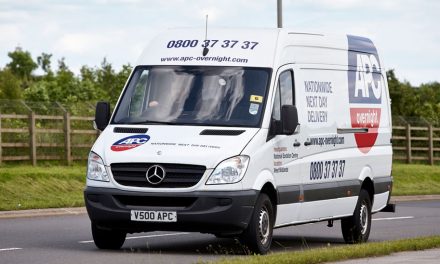
From Windows to doors
Sarah Clelland, marketing manager at Snow Valley, investigates trends in online retail delivery in the UK. January 2010 saw the release of our latest Online Retail Delivery in the UK Report. For five years, Snow Valley has been carrying out annual research into how UK retailers are delivering goods bought online to their customers. The aim is to help the industry to understand e-commerce delivery trends and best practice. This year the report is being sponsored by MetaPack.
To produce the 2010 edition, we visited 166 UK online stores in September 2009, placing orders on 136 of the sites. Because we actually place an order we get to see how each retailer performs in terms of speed and communication throughout the process, which is all important for customer loyalty.
It is worth stating upfront that Snow Valley is a provider of e-commerce solutions. We build and operate websites for retailers and as such we have no particular axe to grind when it comes to delivery.
But there is no doubt that delivery information, charges, and options can have a strong influence on whether a customer completes an order or not. By understanding this area we can help our clients to strike a balance between flexibility, value for money, and profitability, so that they can maximise their browser-to-buyer conversion rates.
Especially for Mail & Express Review, we have summarised ten of the trends that we have noted over the past five years.
Retailers are offering more delivery flexibility – Back in 2005, 48% of the retailers we tested gave us absolutely no choice about when the delivery would arrive. The customer was offered a fixed charge and a fixed timeframe and it was a case of ‘take it or leave it’.
This year 64% of the retailers could offer at least two options. The most popular approach was to have a standard service and a premium service but one retailer offered seven different delivery options, covering a choice of Saturday and specific time of day services.
Admittedly, this means that 36% of retailers still do not offer any flexibility. But the trend clearly shows that retailers are moving away from the one size fits all approach.
Take up of Saturday and other services is slow – Although we are definitely seeing an increase in online retail delivery flexibility, the take up of services such as Saturday delivery or delivery on a specific date is happening quite slowly: In 2005, 23% of the retailers offered Saturday delivery. By 2009 this had only reached 26%; 15% of the retailers could support delivery at a specific time of day this year, which shows a very tiny increase on the 14% that had this in 2005; Most surprisingly, delivery on a specific date had not increased at all. 15% of the retailers supported this in 2009, the exact same percentage that had it in 2005.
Why is this so? It is partly down to the way the research has changed. In 2005 we looked at 100 retailers and in 2009 we included 166. What this suggests, I think, is that most companies ramp up their services gradually: a standard service, then a next day service, and only then do they add more specific options. And this theory is borne out to some extent by trend number three…
Larger retailers are more likely to offer delivery options – Thirty of the retailers in our research appeared on the Hitwise Top 50 Shops List from August 2009. When you look at those thirty sites in isolation you see a very different picture: 76% had at least two options, compared to 64% of retailers generally; 53% had Saturday delivery, compared to 26% generally; 37% had specific time of day delivery, compared to 15% generally; 50% had specific date delivery, compared to 15% generally.
This might seem like a no brainer, but it is not. Larger retailers do not offer more flexibility in every area. For instance, they are less likely to offer international delivery, and they are less likely to have online order tracking. But when it comes to supporting more specific delivery services they lead the way.
Free delivery as standard has not increased – John Lewis started offering free delivery as standard on everything in autumn 2007, which made us wonder if this was going to be the big future trend. But they have since reintroduced a charge and our research suggests that other retailers are not offering this benefit either. Only 13% of retailers offered free delivery as standard on everything this year, exactly the same percentage as in 2005. It is particularly popular among retailers selling entertainment goods (DVDs, games, CDs) where, interestingly, 27% of larger retailers offered free delivery as standard.
Free delivery over a certain order value threshold has increased – Where free delivery is increasing is as a way of encouraging a customer to spend more when placing an order. 39% of the retailers offered free delivery over a certain order value in 2009, compared to only 24% in 2005. We also noted that the average order value threshold, over which delivery becomes free, is decreasing.
Standard delivery charges are going up –43% of the retailers charged over £4 for standard delivery this year, compared to 32% in 2005. This suggests that standard delivery charges are increasing gradually.
Premium delivery charges are coming down – Whereas standard delivery charges appear to be increasing, the charges for premium services seem to be coming down. Only 9% of the retailers charged over £10 for next day delivery in 2009, compared to 16% in 2008. 32% of the retailers offered Saturday delivery for less than £5.99 this year, compared to 23% last year.
International is increasing but slowly – We were surprised that only 53% of the retailers offered international delivery either to Europe or further afield in 2009. It represents a very small increase on the 47% that offered this in 2005. The relative weakness of the pound versus the euro and dollar would surely make UK retailers more attractive to overseas customers. What was especially interesting was that only 30% of larger retailers could deliver abroad.
Online order tracking has increased – By far the most dramatic trend that we have seen over the past five years has been the growth of online order tracking. In 2005 only 59% of retailers allowed customers to log in to their accounts on the website and check the status of their orders. In 2009 this had risen to 84%. And more and more retailers are offering a link to the carrier’s website, with varying degrees of success.
Text messaging is not increasing – Finally, the trend that we keep expecting to see but that never materialises: the use of SMS messaging to inform customers about the status of their orders. In 2008 our research told us that only five retailers had used text messaging and we were inundated with queries suggesting that this was way too low. But not only were we right, nothing had changed in the intervening twelve months: in total we received text messages from just five retailers, a measly 4% of orders.
This article is featured in the March 2010 issue of the Mail & Express Review. If you do not receive the industry-leading magazine and don’t want to miss out, subscribe by clicking here.












